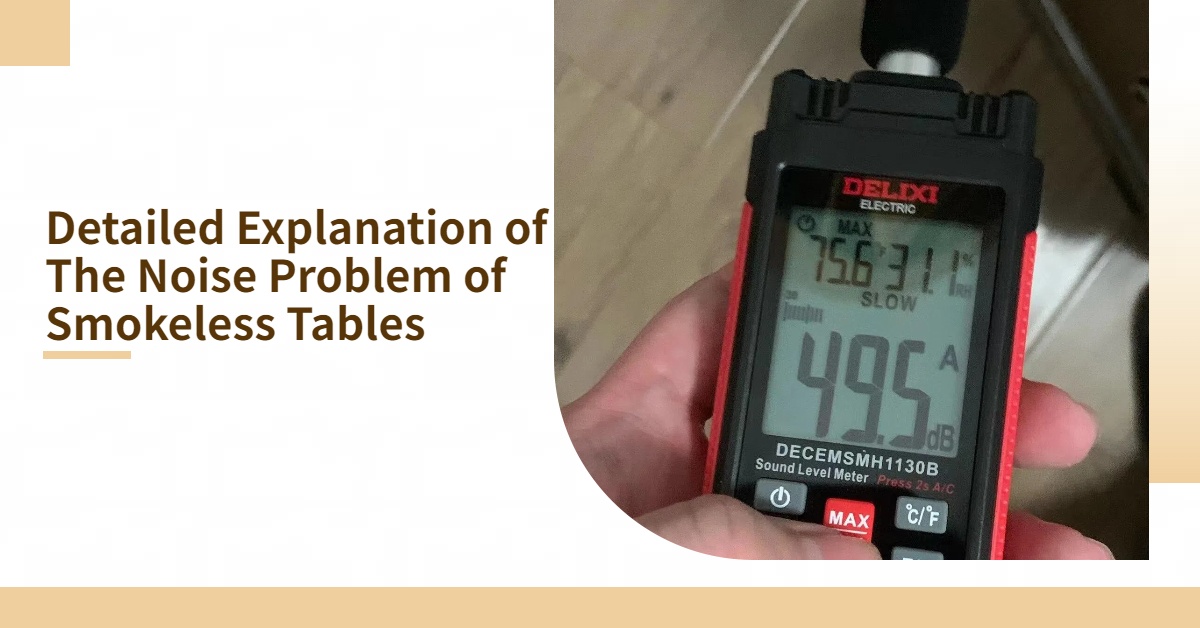Recently, restaurant owners’ concerns about whether smokeless hot pot tables or barbecue tables make noise during use have drawn widespread attention. To address this question, today we will provide detailed information on the potential noise issues associated with typical smokeless hot pot tables and barbecue tables, focusing primarily on noise related to induction cookers, electric ceramic stoves, purification devices, and assembly errors. Let’s delve into the details together.
The noise from the induction cooker
First, let’s talk about the potential noise issues with induction cookers. The sound generated by induction cookers primarily comes from the rotation of the internal fan. The main function of the fan is to dissipate heat, ensuring that the induction cooker maintains an appropriate temperature during operation. Therefore, the fan may accelerate its rotation and produce noise when operating at high temperatures. The fan’s speed, design, and quality all contribute to the noise level.
Additionally, induction cookers operate on the principle of electromagnetic heating. When the electromagnetic field acts on the bottom of a stainless steel pot or other suitable cooking utensils, it may produce some noise. This noise is typically caused by the interaction between the electromagnetic field and the cookware. If the selected cookware does not match the induction cooker, for example, if the pot is too thin, it may cause rapid vibrations at the bottom of the cookware during heating, resulting in noise. This vibration sound may then be transmitted to other components of the induction cooker, leading to additional noise.
To minimize the noise generated by induction cookers, we implement various noise reduction design measures during the manufacturing process. This includes using silent fans, optimizing the layout of electronic components, and incorporating soundproofing materials. Restaurant owners can choose induction cookers that provide customers with a quieter dining experience.


The noise from the electric ceramic cooker
The noise of electric ceramic cookers is similar to that of induction cookers, but their heating method involves indirect heating. Specifically, electric ceramic cooker first uses their resistance for heating and then transfer the heat to the cooking plate for heating. Therefore, the fan noise is generally slightly louder than that of induction cookers. However, in the production of an electric ceramic cooker, we also implement noise reduction designs to minimize the noise generated by the electric ceramic cooker.

The noise of the purifier
The purifier in the hot pot table may generate some noise during operation, primarily originating from the operational components inside the purifying device. Purifying devices typically include one or more fans designed to draw in and filter smoke, odors, and other pollutants. These fans may produce some noise, especially during high-speed operation or heavy-duty work. Additionally, insufficient sealing of the purifier table legs can contribute to noise. In the manufacturing process of purifiers, we pay close attention to the tightness of the seals on the purifier table legs, emphasizing the reduction of noise generated by the purifier.

Problems occurred during the assembly
During the assembly of smokeless hot pot tables and barbecue tables, components such as pots, pot rings, induction cookers, and electric stoves need to be reasonably matched to minimize errors. Under normal circumstances, there should not be any noise issues. However, if there are problems with the components during the assembly process, vibrations from pots and grills may transmit to other parts, causing some noise. Therefore, in the design and customization process of tables and accessories, we produce and match them according to the dimensions specified by the customer to avoid assembly issues that could lead to noise.


The sound of hot pot water boiling and grilling
Finally, we know that barbecues and hotpots themselves will produce some noise, but usually, these noises are small and will not cause too much interference to the dining environment.

Overall, if all the above components are free of any quality issues, the overall noise level of smokeless hot pot tables and barbecue tables can be controlled around 70-80 decibels, equivalent to the volume of normal conversation, which is an acceptable range. However, if there are issues in any of the aforementioned processes or products, the noise may be more significant. Therefore, when choosing smokeless hot pot and barbecue combo tables, restaurant owners should pay attention to the quality and craftsmanship of the tables to ensure that customers can enjoy their meals in a relatively quiet environment.

